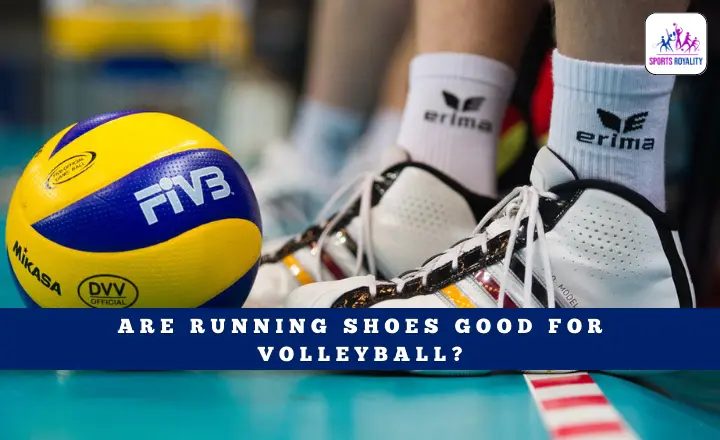As athletes strive to maximize their performance on the volleyball ground, footwear is a crucial aspect often debated. While people have some questions, Are running shoes good for volleyball?
In this article, we will delve into the debate over whether running shoes are truly good for volleyball, exploring the pros and cons of each option and ultimately providing guidance on making an informed choice that optimizes performance and minimizes the risk of injury.
Are Running Shoes Good For Volleyball
Running shoes may seem like a viable option due to their comfort and cushioning, but they are not designed to meet the specific demands of the sport.
In the following passage, I will explain the three primary reasons why running shoes are unsuitable for playing volleyball.
Inadequate Lateral Support
This flexible design can harm volleyball players who require more lateral support. Quick side-to-side movements are common when playing the game of volleyball, and running shoes don’t provide the stability needed for these types of motions.
The thin upper material and lack of lateral support leave your feet vulnerable to twisting or rolling over, increasing the risk of ankle injuries.
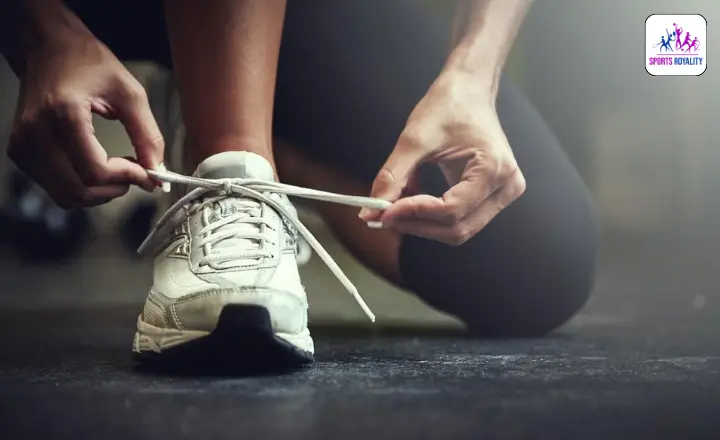
Running shoes often have a cushioned midsole designed to absorb impact as you run forward. While this feature may be beneficial for runners, it can hinder performance in volleyball.
In addition to the risk of injury, the fear of planting your foot awkwardly and suffering an ankle roll is a continuous concern when wearing running shoes during volleyball games.
Without proper reinforcement on the sides and heels of the shoe, it becomes increasingly difficult to trust your feet while maneuvering on the court. This fear can greatly affect an athlete’s performance, causing hesitation in movements that should be swift and confident.
By wearing appropriate volleyball shoes that offer superior lateral stability, players can feel more secure on their feet and play with greater ease and confidence.
Poor Traction
Running shoes fall short in this department. While they may offer ample cushioning and support for long-distance running, their outsoles are not designed for the lateral movements involved in volleyball.
Running shoe outsoles are made of a completely different material, like carbon rubber, which is highly durable and is designed to weather the elements outdoors. This tread pattern on the outsole provides optimal grip while running on pavement or other uneven surfaces.
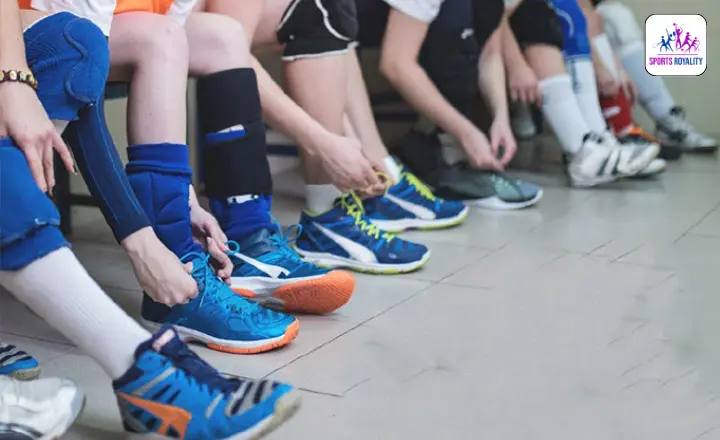
When it comes to indoor sports such as volleyball, these patterns can hinder your performance by causing you to slip or lose traction during quick movements from side to side.
Volleyball shoes are specifically engineered with better traction in mind. The outsole of a typical volleyball shoe features a herringbone pattern that allows for multidirectional movement and maximum grip on indoor court surfaces.
The sole’s materials are chosen for their ability to provide solid traction while being lightweight enough not to hinder the quick footwork required on the court.
Inadequate Cushioning
Volleyball involves a lot of quick side-to-side movements, which can put extra strain on your ankles and knees if you don’t have proper support. Running shoes are designed for forward motion and don’t offer the same stability needed in volleyball.
Another significant issue with running shoes in volleyball is their outsole design. Running shoes often have a flat outsole, which needs to provide more traction on indoor courts. This can increase the risk of slips and falls during fast-paced plays or sudden changes in direction.
Investing in a pair of dedicated volleyball shoes is crucial to prevent injuries and enhance your performance on the court. These specialized shoes offer the right amount of cushioning, lateral support, and grip specifically designed for the volleyball demands.
Your joints will thank you, as they’ll be better protected from repetitive impact, allowing you to focus on improving your game instead of nursing unnecessary pain.
Does It Matter That Much?
Regarding the quick lateral movements and explosive jumps required in volleyball, running shoes fall short. The traction on running shoes is not optimized for the sudden changes in direction that occur on the volleyball court.
Running shoes have a higher heel-to-toe drop compared to volleyball-specific footwear. While this feature benefits runners who need cushioning and support during long-distance runs, it can hinder a volleyball player’s performance.
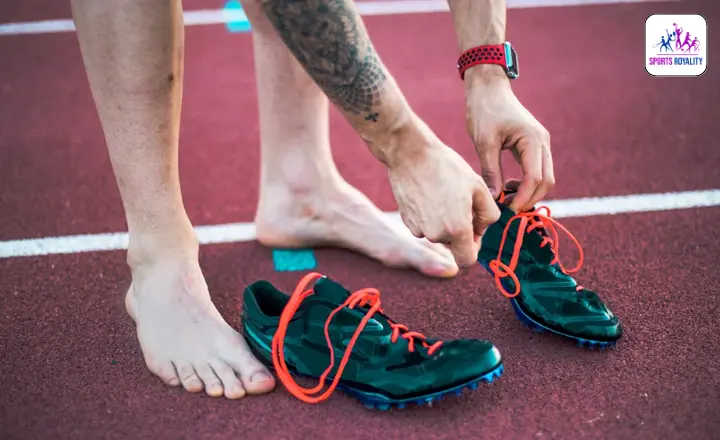
The elevated heel position shifts the body’s weight forward, affecting posture and balance during dynamic movements. It becomes harder for volleyball players to maintain proper technique while optimizing power and speed.
Other Shoes To Avoid Wearing On The Volleyball Court
I have witnessed some astonishing kicks on the volleyball court throughout the years.
Toe shoes/barefoot shoes – The grip on these shoes tends to lose traction on a hard court, and there is minimal cushioning for impact protection.
Boxing shoes – Volleyball requires sudden stops and starts and frequent lateral movements. Boxing shoes typically have thin soles with minimal grip, which can increase the risk of slipping or sliding on the floor. This lack of traction can also affect your ability to make explosive jumps and land securely.
Vans – These shoes are terrible for jumping due to their slapping sound on the court caused by the absence of a seamless transition from heel to toe.
Wear These Shoes Instead
You don’t necessarily need specialized volleyball shoes, but there are certain types of shoes you avoid.
Generic Court Shoes
This encompasses footwear specifically created for handball, badminton, and even tennis. These shoes generally lack sufficient impact cushioning for extensive jumping; they offer reliable grip, quick responsiveness, and satisfactory lateral stability.
Basketball Shoes
Basketball shoes are my favorite choice for volleyball because of their advanced cushioning systems. While volleyball shoes may offer good stability and traction on the court, basketball shoes provide the added benefit of superior shock absorption.
The high-intensity movements in volleyball, such as jumping and landing, can put a lot of strain on the feet and joints. With basketball shoes, the cushioning technology helps minimize impact and reduces the risk of injuries like ankle sprains.
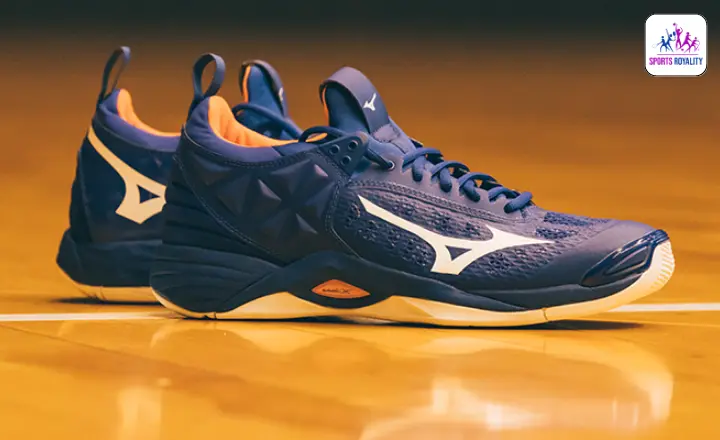
Another advantage of wearing basketball shoes for volleyball is their versatility. Basketball shoes are designed to support multidirectional movements, making them ideal for quick changes in direction that are common in volleyball.
The outsoles of basketball shoes often have herringbone patterns that enhance traction on various surfaces, including indoor courts used for volleyball games. This allows players to move freely without worrying about slipping or sliding during intense plays.
Difference Between Basketball and Running Shoes
Basketball shoes are designed to provide ankle support and stability, with extra cushioning to absorb the impact of jumping and sudden lateral movements. Running shoes are built for forward motion, emphasizing breathability and providing a softer midsole for shock absorption during repetitive heel-to-toe movements.
Another difference lies in the outsole design; basketball shoes have a broader base and more pronounced traction patterns to grip indoor surfaces, while running shoes feature a smoother and lighter outsole for efficient forward movement on various terrains. It’s also important to note that the weight of these two types of shoes differs significantly – basketball shoes tend to be heavier due to their construction for lateral support and stability. In contrast, running shoes prioritize lightness to enhance speed and endurance.
Understanding these differences is crucial in choosing the proper footwear for specific activities. While stylish designs and brand endorsements may factor into purchasing decisions, considering the functional disparities between basketball and running shoes will ultimately optimize performance and reduce injury risk based on individual needs.
Conclusion
We have explained in detail above that running shoes are good for volleyball. In short, volleyball requires quick lateral movements, jumping and landing, and stability on the court. Running shoes lack the support and cushioning to protect against these high-impact movements.
Investing in a pair of volleyball-specific shoes can greatly improve performance and reduce the risk of injury. If you’re serious about playing volleyball, it’s worth investing in proper footwear designed specifically for the sport.
FAQ’s
Do all professional players wear specialized volleyball shoes?
Almost all professional volleyball players wear specialized footwear designed explicitly for the sport due to their superior performance-enhancing features.
Where can I find a good pair of volleyball shoes?
You can find various quality volleyball shoe options at sporting goods stores or online retailers specializing in athletic footwear. It is recommended to try them on before purchasing to ensure proper fit and comfort.

